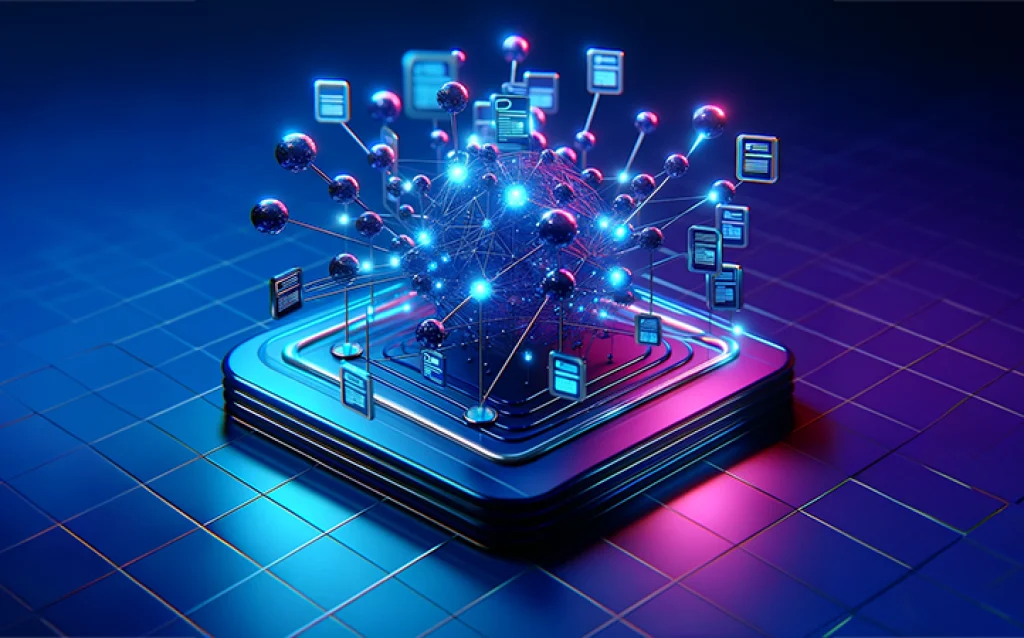Identifying AI-generated content involves looking for telltale patterns like repetitive phrasing, lack of nuance, and generic examples. While AI detection tools like GPTZero and Originality.ai can help, they aren’t foolproof. The most reliable approach combines these tools with human judgment—look for writing that lacks personality, emotional depth, or specific industry insights. As AI evolves, maintaining a balance of technology and human oversight remains essential for ensuring content authenticity in your digital marketing efforts.
Understanding the challenge: AI content detection in digital marketing
The digital marketing landscape is increasingly populated with AI-generated content, creating both opportunities and challenges for business owners. Distinguishing between human and AI-written materials has become a pressing concern as search engines like Google update their algorithms to prioritise authentic, valuable content.
For business owners, the stakes are significant. Content that appears artificial may damage brand credibility, reduce engagement, and potentially face penalties from search engines. With tools like ChatGPT and other AI writers becoming mainstream, the volume of machine-generated content has exploded, making identification skills essential for maintaining competitive advantage.
The challenge isn’t simply about avoiding AI content altogether—it’s about understanding when and how to use it appropriately. Many businesses are finding value in using AI to use artificial intelligence for SEO analysis and content creation, while ensuring human oversight maintains quality and authenticity.
As detection technology evolves alongside generation capabilities, staying informed about the characteristics that distinguish AI from human writing becomes a valuable skill for any digital marketing professional.
What are the common indicators of AI-generated content?
AI-generated content typically exhibits several recognisable patterns that can help you identify its non-human origin. One of the most common indicators is repetitive language—AI often reuses similar phrases or sentence structures throughout a piece, lacking the natural variation that human writers instinctively create.
Another telltale sign is unnaturally perfect grammar and vocabulary. While this might seem desirable, human writing typically contains subtle irregularities that give it personality. AI-written text can feel oddly sterile or mechanical, maintaining consistent formality throughout without the natural shifts in tone that characterise human communication.
AI also struggles with nuance and often produces content that:
- Contains generic examples rather than specific, relatable scenarios
- Lacks genuine emotional depth or personal perspective
- Offers superficial coverage of complex topics
- Presents information in predictable patterns
Context inconsistencies can also reveal AI authorship. Machine-generated content may reference facts that don’t align with current events or may miss cultural sensitivities that human writers would naturally consider. These subtle disconnects often become apparent when you examine the content carefully.
When AI attempts to generate content about industry-specific topics, it frequently produces text that experts would immediately recognise as lacking insider knowledge or authentic experience—a lack of “been there, done that” perspective that genuine human expertise provides.
Which tools can help detect AI-written content?
Several specialised tools have emerged to help digital marketers identify AI-generated content. These detection tools use advanced algorithms to analyse text patterns and determine the likelihood that content was machine-created rather than human-written.
GPTZero has become one of the more popular options, specifically designed to detect content created by large language models like ChatGPT. It examines textual “perplexity” and “burstiness”—technical measures of how predictable and varied the writing appears—to generate a probability score for AI authorship.
Originality.ai offers a more comprehensive solution for business owners, providing both plagiarism checking and AI detection in one platform. This tool is particularly valuable for companies that need to verify content from freelancers or agencies.
Other noteworthy detection tools include:
- Content at Scale’s AI detector, which offers a percentage score for human vs. AI likelihood
- Writer.com’s AI Content Detector, which helps identify patterns typical of AI writing
- Sapling.ai, which examines linguistic patterns to spot potentially generated text
It’s worth noting that no detection tool is infallible. As AI content generation improves, detection becomes more challenging. The most effective approach combines these tools with human judgment and critical evaluation, especially when writing blog posts that convert readers requires authentic, trustworthy content.
Many business owners find it helpful to run their own AI-generated samples through these tools to understand their sensitivity and accuracy before relying on them for evaluation of external content.
How can you compare human vs. AI writing styles?
Human writing carries distinctive qualities that AI often struggles to replicate convincingly. The most noticeable difference lies in creativity and unpredictability—humans naturally vary their expression in ways that feel authentic rather than formulaic.
When comparing content, look for emotional intelligence in the writing. Humans naturally infuse their work with genuine emotional depth, personal anecdotes, and unique perspectives based on lived experience. AI-generated content typically lacks this emotional authenticity, instead simulating emotions in ways that can feel shallow or performative.
Human writers also demonstrate contextual awareness that extends beyond facts to include cultural nuances, timely references, and industry-specific insights that only come from actual experience. They make intuitive connections that might seem tangential but ultimately enrich the content in meaningful ways.
Technical differences are equally revealing:
- Human writing often contains informal elements like contractions, slang, or colloquialisms used naturally and appropriately
- AI tends to maintain consistent complexity throughout, while humans vary sentence structure and complexity based on points being made
- Humans incorporate their unique voice and personality, creating distinctive writing that reflects their character
- AI typically excels at structure but struggles with truly original insights
Perhaps most tellingly, human content often includes unexpected elements—personal asides, clever wordplay, or unique observations that simply wouldn’t occur to an AI system working from patterns in training data. These moments of genuine originality serve as powerful indicators of human authorship.
When comparing samples, focus not just on what information is presented, but how it’s delivered—the personality and perspective behind the words often reveals their true source.
What steps should you take if you suspect content is AI-generated?
If you encounter content you believe might be AI-generated, a systematic verification process can help determine its origins. Begin by running the text through one or more AI detection tools mentioned earlier, but remember that these tools provide probability rather than certainty.
Next, conduct a thorough manual assessment focusing on the indicators we’ve discussed. Look for the natural variation, emotional depth, and unique insights that typically distinguish human writing from AI generation. Pay particular attention to how examples and experiences are described—are they generic or specific, superficial or detailed?
If you’re evaluating content submitted by a team member or freelancer, consider these practical steps:
- Ask clarifying questions about specific sections that seem suspicious
- Request an explanation of the research and thought process behind the content
- Compare the writing style with previous submissions from the same source
- If appropriate, request a video call to discuss the content and its development
For content you’re considering publishing on your own platforms, establish clear guidelines about acceptable use of AI tools. Many businesses find value in using AI for outlining, research assistance, or editing while maintaining human authorship for the core content creation.
If you confirm content is entirely AI-generated when human writing was expected, address this professionally with the provider. Most importantly, establish whether this violates your content policies and what remediation is appropriate.
Remember that the goal isn’t necessarily to eliminate all AI assistance, but rather to ensure transparency about its use and maintain the quality standards your audience expects.
Key takeaways: Maintaining content authenticity in an AI-powered world
Navigating the evolving landscape of AI-generated content requires a balanced approach that leverages technology while preserving authenticity. The most successful digital marketers are developing a hybrid strategy—using AI as a powerful tool while maintaining human oversight and creative direction.
Establishing clear internal policies about AI use is essential. Define precisely when and how AI tools may be used in your content pipeline, ensuring everyone understands the boundaries between acceptable assistance and inappropriate replacement of human creativity.
Focus on these practical strategies for maintaining content integrity:
- Use AI to overcome writer’s block or generate initial ideas, but always refine with human expertise
- Implement a multi-step review process that specifically looks for AI indicators
- Develop your brand’s unique voice and style guide that AI would struggle to mimic
- Incorporate personal experiences and company-specific insights that only your team would know
- Consider disclosure when AI tools have played a significant role in content creation
Remember that search engines are continuously improving their ability to identify and potentially devalue AI-generated content that lacks originality or depth. Investing in authentic, human-crafted content that delivers genuine value remains the most sustainable strategy for long-term digital marketing success.
Finally, stay informed about evolving technologies on both sides of this equation. Both AI content generation and detection are rapidly advancing fields. By leveraging artificial intelligence for SEO analysis while maintaining human creativity in content production, you’ll be positioned to thrive regardless of how the technological landscape shifts.






